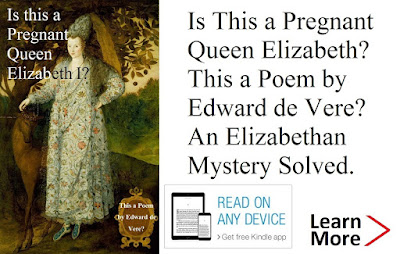At this point in 1536, Catherine of Aragon has recently
died. Anne Boleyn has been executed. The King’s illegitimate son, the Duke of
Richmond, has been named heir and suddenly died of a consumptive disease. The
King’s new wife, Jane Seymour, is pregnant though his wives have a tendency to
miscarry. Jane may have been encouraging him to reconcile with his daughters by
his previous marriages.
The Emperor’s representative in Rome, Dr. Pedro Ortiz, has
an impressive network, it would seem, that keeps him informed with surprising
speed of even the most sensitive communications between Eustace Chapuys, the
English ambassador, in London, and the Emperor.
DR. ORTIZ to the EMPRESS ISABELLA. Rome, 17 August 1536.
This notwithstanding, writes the ambassador, Parliament ended
its sessions four days before, on the 28th of July, after passing the statute
concerning the succession to the throne of England. It had not yet been
printed, but it was averred that both the Princess and the daughter of the
King's concubine had therein been declared illegitimate. It is, moreover, established
that the son or daughter to be born of this new marriage shall succeed to the
Crown, and in their default, whoever the King should please to designate, for
the appointment is entirely left to his will and discretion. In case of there
being no sons at all of this last marriage, it is believed the King's
determination was that the succession should go to his bastard son, the duke of
Richamont (Richmond), who, however, being consumptive, happened to die, by
God's permission, on the very same day that Chapuys wrote.
My firm belief is that the Princess has now greater need than
ever of being commended to God in our prayers that she may stoutly persevere in
that firm and resolute conduct which that holy martyr, the Queen, her mother,
followed to the last.
Here, Chapuys speaks of a reconciliation between Henry and
the Princess Mary. Mary’s most powerful supporter has been the Emperor. The
tone becomes hopeful, even to the point of being unusually naïve for the
ambassador.
EUSTACE CHAPUYS to the EMPRESS ISABELLA. London, August 29, 1536.
The Princess (thank God) is in good health, and has been, ever
since her reconciliation with the King, her father, well and kindly
treated,—nay, with greater ceremony and attention than in times of old, when
nobody could dispute her title to the throne of England. Your Majesty ought to
be very much pleased at this; for, besides her close relationship both to the
Emperor and to Your Majesty, her having escaped safe from the greatest danger
that ever a princess was in, and such as no words can describe, the change is
of itself a motive for joy and thanksgiving. For it is to be hoped that through
the Princess' means, and through her great wisdom and discretion, she may
hereafter little by little bring back the King, her father, and the whole of
the English nation, to the right path. It would, indeed, have been a great pity
to lose such a gem, her virtues being of such a standard that I know not how to
express and define her great accomplishments, her wisdom, beauty, prudence,
virtue, austere life, and her other great qualities; for certainly all those
who have been and are acquainted with her cannot cease from praising her any
more than I can. Her love for the Emperor, her cousin, and for Your Majesty, is
such that it cannot be surpassed. Not having facilities for writing, she has
charged me to transmit to Your Majesty her most affectionate regards.
Matters have definitely much improved. Chapuys describes
Mary in glowing terms such as were rarely applied to her during her life.
EUSTACE CHAPUYS to the EMPEROR. London, September 2, 1536.
With regard to the Princess, Cromwell told me that without fail she would
shortly be appointed heir apparent to the Crown, and that the King, his master,
approved entirely of her marriage to the Infante Dom Luiz [of Portugal], but
said that it was requisite to proceed very slowly and with great caution in the
matter, and that for the present it was enough to talk about the principal
business. He, however, wished me to repeat before his colleagues what I once
told him concerning the person, quality, and good parts of that Infante, which
I did at once, and fancy that a good impression was produced. With regard to
their favoring the pretensions of the Palatine duke Frederic, they said that it
was an accessory to the principal point, and that they would do their best to
persuade the King, their master, to include in the next treaty an article
relating to it.
Mary has been given back her status and her servants. Negotiations are underway on several fronts for a suitable husband. Chapuys is hearing from the king’s closest advisors that she will recover her place in the succession. Life was surely much improved for Mary however many trials still lay ahead.
DR. ORTIZ to the EMPEROR. Rome, 7 Sept. 1536.
Wrote on the 9th of July and 17th Aug. Since then letters from Eustace Chapuys in date of the 12th ult. have been received, purporting that the Princess was much better treated than before, and that the King, awakened to her good qualities and many virtues, had ordered that she should now be attended just as his bastard daughter [Chapuys’ habitual designation of Princess Elizabeth] used to be when her mother Anne was alive. It is expected that very shortly her state and condition will be fixed in a permanent manner.
The King, says the letter, is at his usual amusement of the chase, with the Queen, as he is in the habit of doing every season; he will remain longer than usual this year.
Source: State Papers Relating to the Negotiations Between
England and Spain, V. 5. Pt. 2. Henry VIII.
Also at Virtual Grub Street:





No comments:
Post a Comment